INTERNACIONAL
Iranian dissident leader outlines vision for regime change, says it’s ‘inevitable’
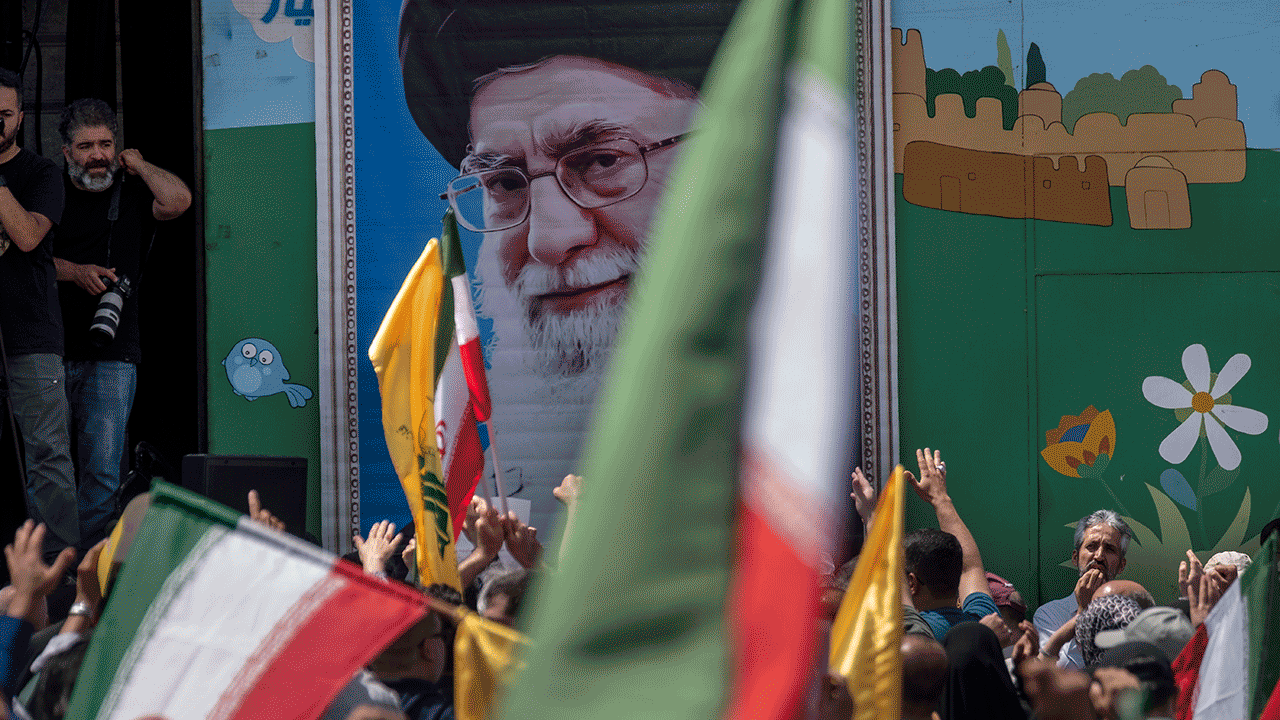
NEWYou can now listen to Fox News articles!
As President Donald Trump’s historic ceasefire takes effect, uncertainty over the future of Iran and the push for regime change has the main Iranian opposition groups verbally fighting it out to persuade Iranians that they are most capable of taking over from the mullahs.
In an exclusive interview with Fox News Digital, Maryam Rajavi, president-elect of the National Council of Resistance of Iran (NCRI), answered questions on the group’s positions and policies that she hopes will lead the Iranian people to rise up against the regime.
Rajavi leads the controversial group, which is affiliated to Mujahedin-e Khalq (MEK). Once listed as a terrorist organization in the U.S., the group was taken off the list in 2012 and is credited with first exposing the Islamic Republic of Iran’s nuclear weapons program.
Excerpts of Fox News Digital’s interview with Maryam Rajavi follow.
IS REGIME CHANGE A POSSIBILITY IN IRAN? ASSESSING NEXT STEPS FOR US
Maryam Rajavi, leader of the NCRI.
Fox News Digital: Do you think regime change will occur in Iran?
Maryam Rajavi: Absolutely. Regime change in Iran is not merely a possibility but a historical imperative — inevitable and within reach. An explosive and discontented society and an organized resistance willing to pay the highest price for their homeland’s freedom exist today. Conversely, the regime of the supreme leader has lost all legitimacy due to deep-rooted structural corruption, ruthless repression, and widespread economic incompetence.
The waves of popular uprisings—from 2009 to 2017, 2018, 2019, and 2022 — with powerful slogans like «Death to the Dictator, Death to Khamenei» and «Death to the oppressor, whether Shah or Leader,» clearly reflect the Iranian people’s unwavering resolve to end this regime.
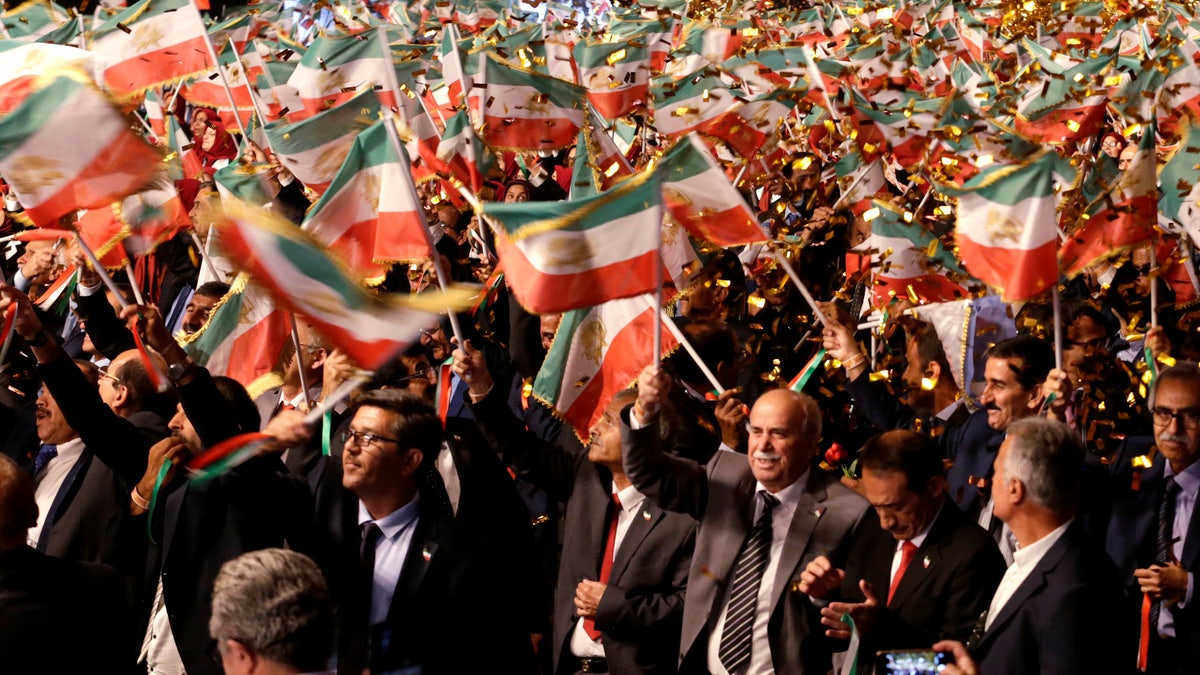
People wave flags during an event in Ashraf-3 camp, which is a base for the People’s Mojahedin Organization of Iran (MEK) in Manza, Albania, July 13, 2019. (Reuters/Florion Goga)
What does your group offer to the Iranian people?
Maryam Rajavi: We offer the Iranian people a democratic and inclusive alternative: a republic based on separation of religion and state, complete gender equality, respect for the rights of ethnic and religious minorities, and abolition of the death penalty. The Ten-Point Plan I presented 19 years ago to the Council of Europe is rooted in universal principles of human rights and provides a comprehensive and practical roadmap for a free and just Iran. Unlike the regime, which rules through fear and repression, we believe in the power of the people and their free choice.
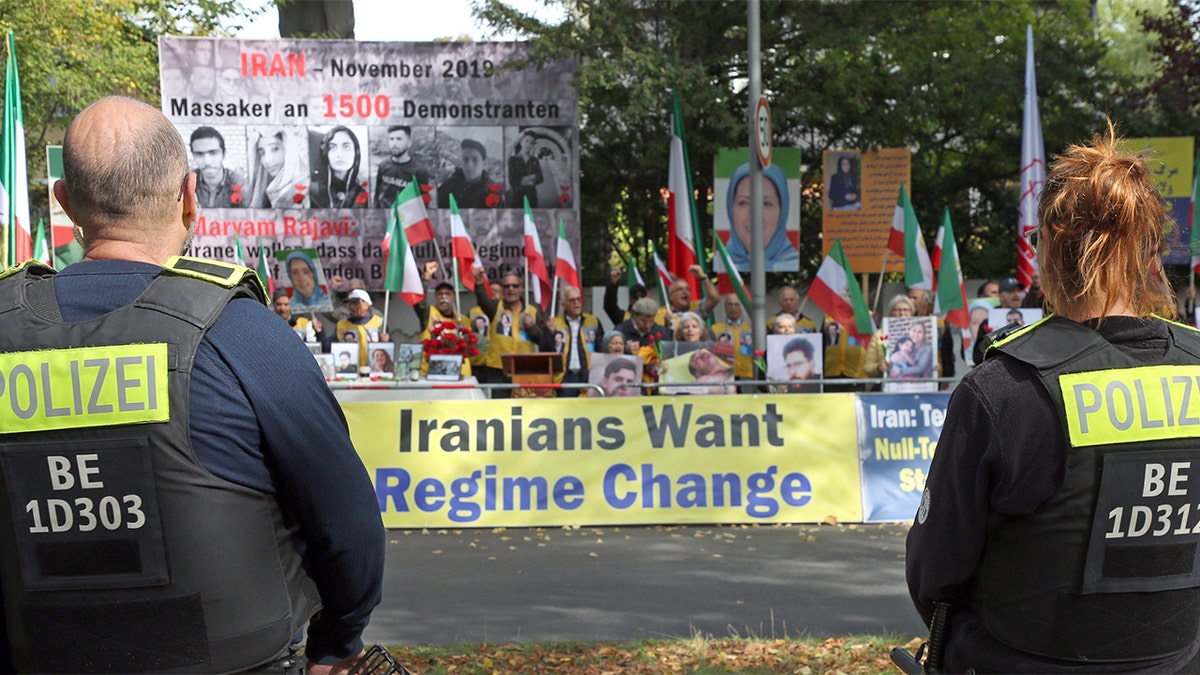
People who followed the call of the German-Iranian Society in Berlin demonstrate in front of the Iranian Embassy against the so-called «moral police» in their home country, in Berlin on Friday, Sept. 23, 2022. (Wolfgang Kumm/dpa via AP)
At the core of our resistance stands the Mujahedin-e Khalq (PMOI/MEK), with its 60-year history of confronting two dictatorships, presenting a tolerant and democratic Islam that embraces coexistence among followers of different religions. It represents a cultural alternative — indeed, the antithesis — to the backward and reactionary culture of the clerics. From the outset, our slogan confronting the clerics has been clear: «No to compulsory veiling, no to compulsory religion, and no to compulsory governance.»
EXILED PRINCE LOOKS TO LEAD IRANIAN PEOPLE IN ENDING ISLAMIC REPUBLIC: ‘OUR BERLIN WALL MOMENT’
One of the most distinctive features of this resistance against misogynistic religious tyranny is its steadfast commitment to gender equality. For more than three decades, women have exercised hegemony and held commanding roles within the MEK, the principal constituent of the NCRI—a pioneering phenomenon that represents a profound and unprecedented transformation.
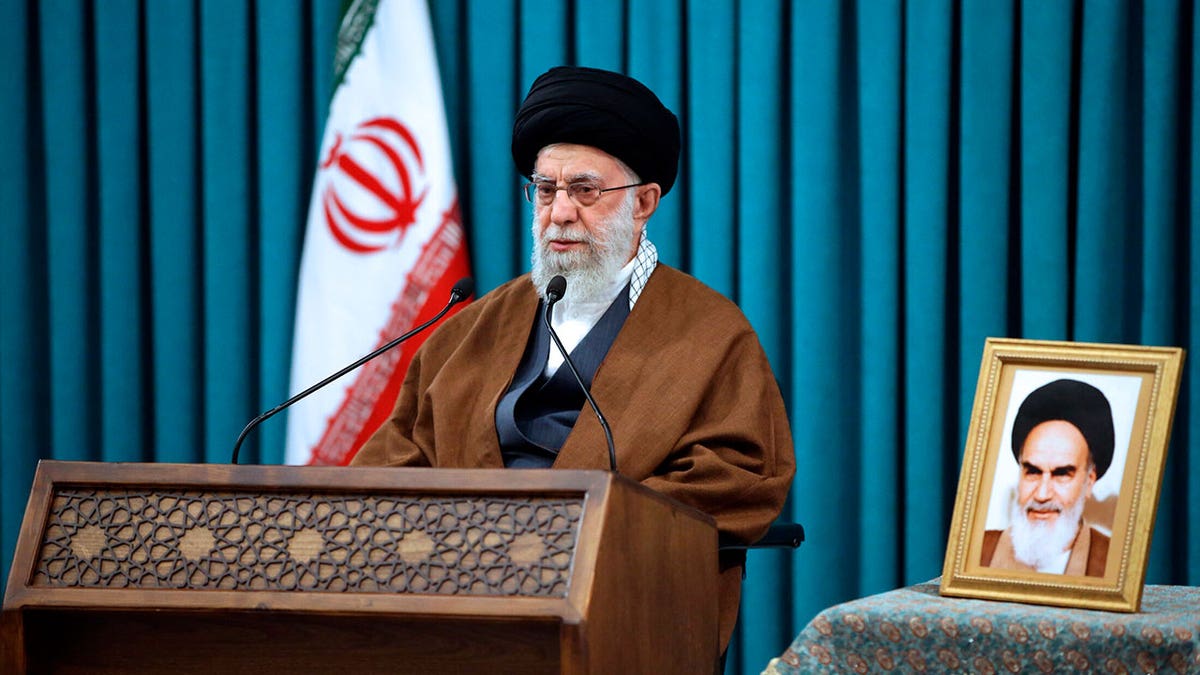
Supreme Leader Ayatollah Ali Khamenei speaks in a televised New Year speech, in Tehran, Iran, on Monday, March 21, 2022. (Office of the Iranian Supreme Leader via AP)
Many say your group is unpopular among ordinary Iranians — how do you respond?
Maryam Rajavi: Under conditions of absolute tyranny, when has the popularity of our resistance ever been genuinely tested through free elections or reliable polling? Under these circumstances, the sole measure is the legitimacy of resistance itself.
Such accusations are part of a deliberate and extensive demonization campaign by the regime against its principal opposition. Annually, the regime spends hundreds of millions of dollars producing films, television series, hundreds of books, thousands of articles, recruiting mercenaries posing as oppositionists, forging documents, and conducting cyber operations, as well as hiring foreign journalists and media outlets—all to disparage the Iranian resistance and cast doubt on its credibility. Their goal is to persuade international counterparts that no legitimate alternative exists and that engaging with this regime is their only option.
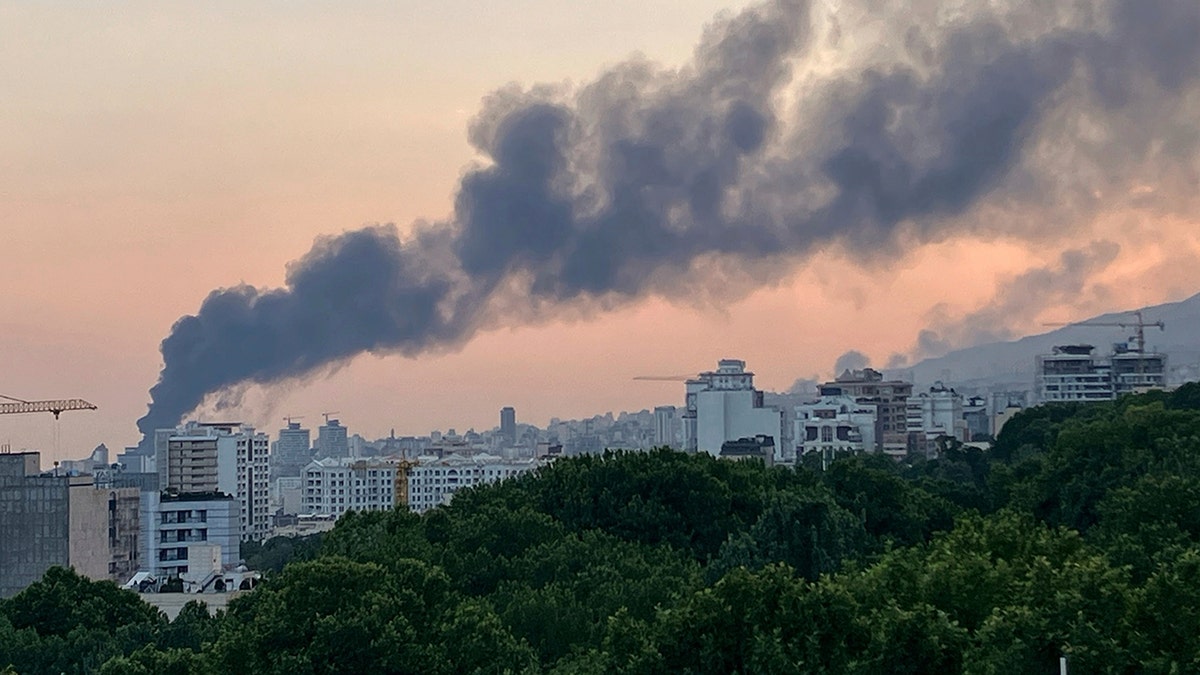
Smoke rises from the building of Iran’s state-run television after an Israeli strike in Tehran, Iran, on Monday, June 16, 2025. (AP Photo)
If our resistance truly lacked popular support, why is the regime so fearful of its influence and impact inside Iran? Why, over the past 46 years, has the permanent slogan at all official regime ceremonies—even in parliament—been «Death to the MEK?» Why have over 100,000 MEK supporters and members been executed? Why has the regime consistently targeted gatherings and representatives of the resistance abroad in its terrorist plots and operations?
Look at the NCRI’s international gatherings, sometimes attracting crowds of up to 100,000 people. These are representatives of the Iranian people, especially from the urban middle class. Look at the list of MEK martyrs, encompassing diverse social classes, and the MEK’s financial independence, funded entirely by Iranian contributions at home and abroad.
THE MISSING MULLAH: IRAN’S ‘SUPREME LEADER’ A NO-SHOW FOR NEGOTIATIONS, THEN HID AS US POUNDED NUKE SITES
We fight on behalf of tens of millions of Iranians for freedom and a better future, pursuing the very ideals George Washington fought for—fundamental human rights: life, liberty, and the pursuit of happiness, under a government deriving its power from the consent of the governed.
What’s your message to President Trump?
Maryam Rajavi: Our message to the President and all world leaders is clear: regime change is within reach, achievable by the Iranian people and their organized resistance. We have consistently emphasized we need neither money nor weapons. What we seek from the international community is a firm policy against the regime and recognition of the Iranian people’s right to self-determination—free from any form of dictatorship, whether religious or monarchical—and acknowledgment of the Resistance Units’ struggle against the IRGC to overthrow the regime. This approach benefits not only the Iranian people but also ensures lasting peace and stability in the Middle East and the world.
Twenty-one years ago, at the European Parliament, I warned that neither war nor appeasement would resolve the Iran crisis. I advocated the realistic third option: regime change by the people and their organized resistance. I warned then that appeasement would embolden the regime and eventually impose war on the West. Today, this warning has, all too bitterly, become reality.
Many opposition groups exist inside and outside Iran. Isn’t it time to put aside differences and unite — including monarchists, minorities, and your group — for the greater good?
Maryam Rajavi: Within Iran, all those committed to overthrowing this regime stand united.
Politically, since its founding in 1981, the NCRI has demonstrated, as the broadest and longest-lasting political coalition in Iranian history, its readiness to cooperate with all political groups and currents committed to democracy, human rights, secularism, and a republican form of governance. This council encompasses diverse organizations, representatives of various ethnicities, including Kurds, Baluchis, Arabs, Turkmens, and political figures with varied perspectives. In 2002, the NCRI proposed the National Solidarity Plan, urging all political currents and groups to unite around three principles: regime overthrow, democratic republic, and secularism.
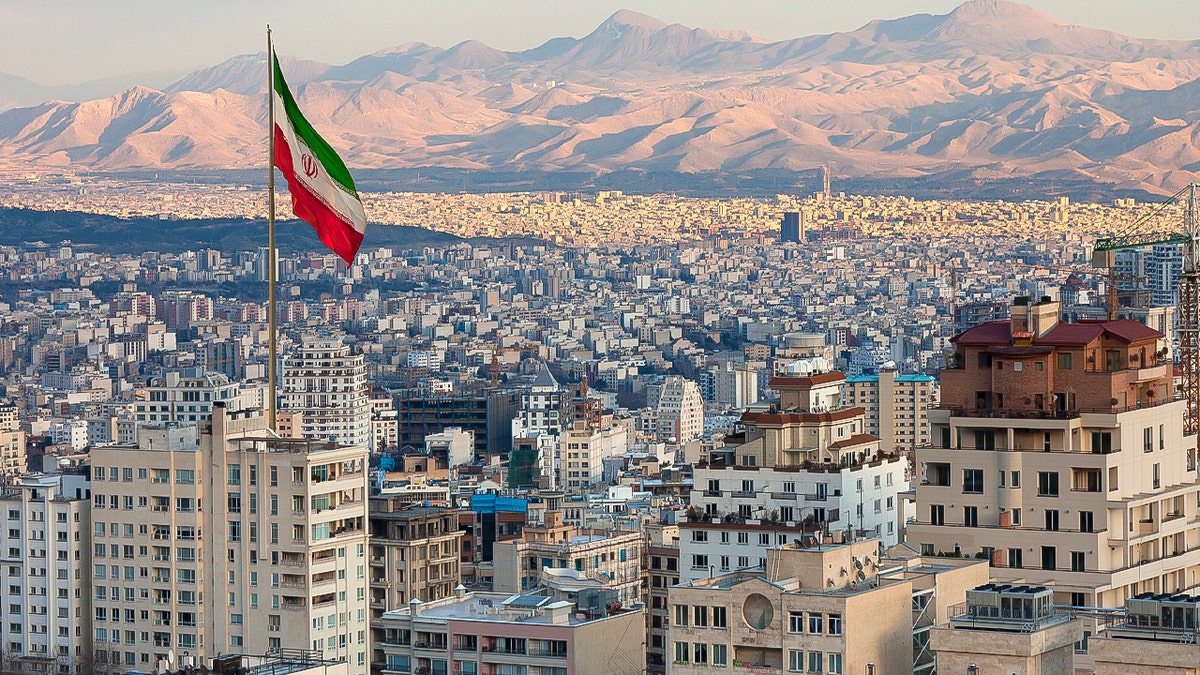
An Iranian flag above the skyline of Tehran at sunset. (istock)
TRUMP HINTS AT REGIME CHANGE IN IRAN WHILE DECLARING ‘MAKE IRAN GREAT AGAIN’ AFTER US STRIKES
The NCRI fully supports minority rights oppressed under both the [Mohammad Reza] Pahlavi and clerical dictatorships, and our plan for autonomy in Iranian Kurdistan, adopted 42 years ago, serves as a model for other ethnic groups.
However, [the]monarchy has no place in Iran, and any alliance with monarchists benefits only the regime, which seeks to associate its opponents with the past dictatorship. Remnants of the Shah have neither influence nor significant organizational presence within or outside Iran.
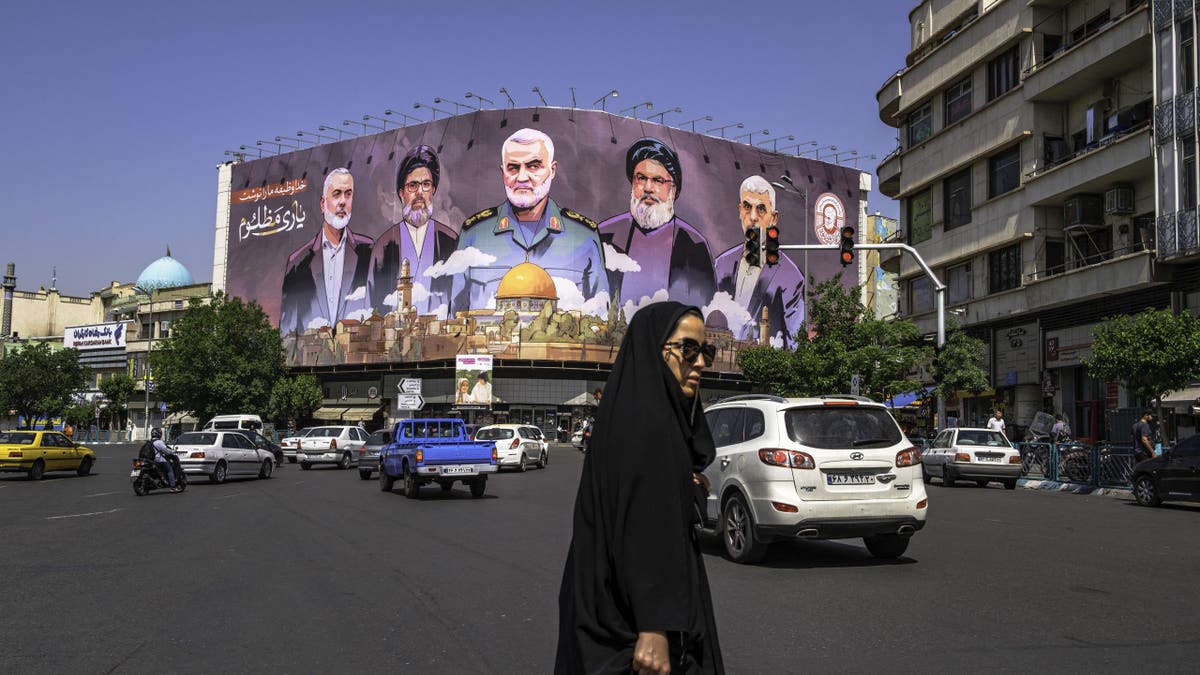
People move past a large banner featuring portraits of slain leaders from Iran-aligned armed groups, including Hamas leader Yahya Sinwar, Hezbollah leader Hassan Nasrallah, and Iranian commander Qasem Soleimani, in central Tehran, Iran, on May 1, 2025. (Photo by MOHAMMADALI NAJIB/Middle East Images/AFP via Getty Images)
If the regime falls, how should the next Iranian leader be selected?
Maryam Rajavi: Only through a democratic process—free and fair elections.
CLICK HERE TO GET THE FOX NEWS APP
According to the NCRI’s plan, the provisional government established after the regime’s fall is obligated to organize elections for a Constituent and Legislative Assembly within six months—free elections through direct and secret ballot. Once convened, this Assembly will assume governance, tasked with drafting a new constitution and managing national affairs. The provisional government’s mandate will conclude upon the Assembly’s establishment, which will then appoint a new interim government reflective of the people’s vote.
The Iranian people look neither to the past nor the current status quo but forward—to a free and democratic future, where legitimacy derives solely from the ballot box.
INTERNACIONAL
Incoming NGA Chair ‘disappointed’ in Dem governors ‘playing politics’ in bipartisan group
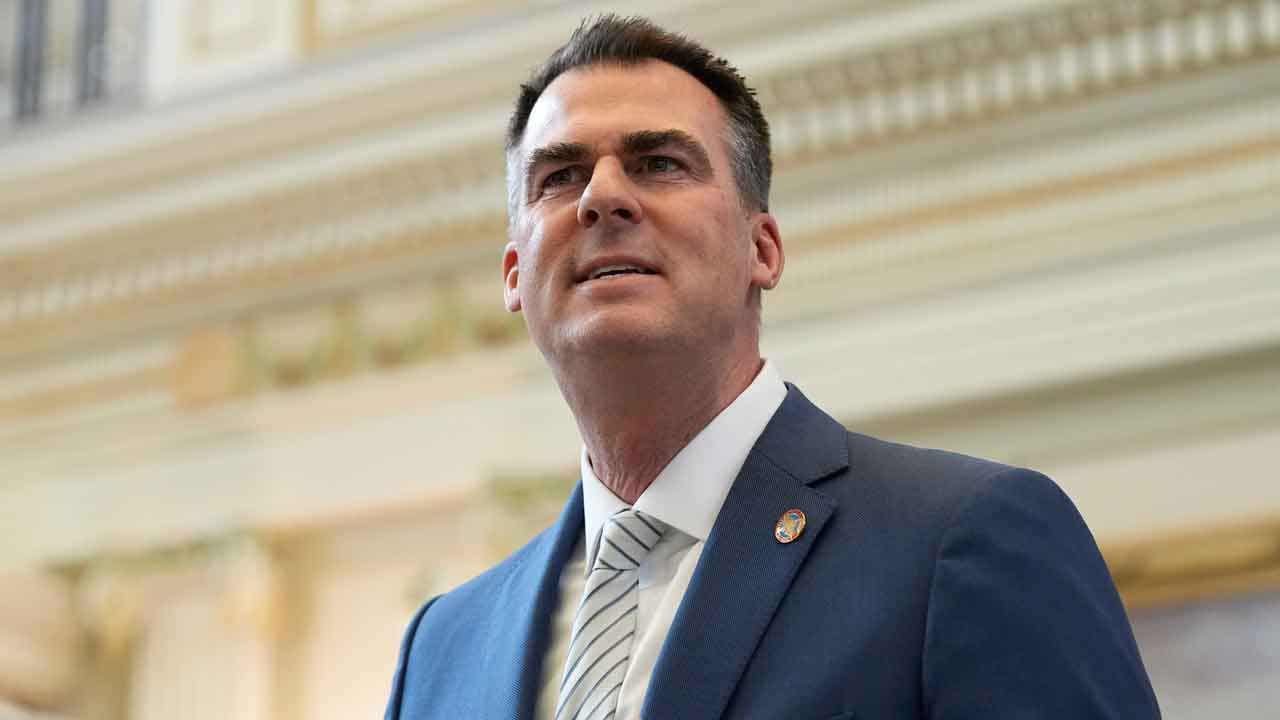
NEWYou can now listen to Fox News articles!
Colorado Springs, Colo. – Incoming chair of the National Governors Association (NGA), Gov. Kevin Stitt, R-Okla., is «disappointed» that some Democratic governors might stop paying their dues to the bipartisan group.
The Atlantic reported ahead of the NGA’s summer meeting in Colorado Springs, Colo., that at least two Democrats, Govs. Tim Walz of Minnesota and Laura Kelly of Kansas, plan to stop paying their dues when asked to renew their membership this month over the NGA’s response to President Donald Trump’s second term.
«We shouldn’t be playing politics like they do in Washington, D.C.,» Stitt told Fox News Digital in an exclusive interview at the summer meeting. «But sometimes, if you’re a governor running for president or a higher office, you make it political.»
Kelly is chair of the Democratic Governors Association (DGA), the partisan gubernatorial arm that has been vocal in resisting the Trump administration. As Walz weighs a third gubernatorial run, the former vice presidential candidate has remained a leading critic of Trump’s administration since losing the White House alongside Vice President Kamala Harris last year.
TIM WALZ LEADING DEM EFFORT TO TURN BIPARTISAN GROUP AGAINST PRESIDENT TRUMP: REPORT
Incoming National Governors Association (NGA) chair Gov. Kevin Stitt spoke to Fox News Digital during the NGA summer meeting in Colorado Springs, Colo. (Deirdre Heavey/Fox News Digital)
The Democratic discontent comes as Democratic Gov. Jared Polis of Colorado prepares to cede his chairmanship to Stitt, a Republican, at this weekend’s summer meeting. Gov. Wes Moore, D-Md., is set to become vice chair.
DEMOCRATS FORGE STRANGE BEDFELLOWS AS PARTY FLOUNDERS IN TRUMP’S 2ND TERM
«I would tell anybody, listen, do you want your leaders to take their ball and go home just because they get mad at something? That’s not the way to solve problems,» Stitt said, adding that he likes both Walz and Kelly.
«Listen, this isn’t the time to take our ball and go home. Let’s sit down and debate what the best policies [are] going forward,» Stitt added.
The Oklahoma governor said it can be «frustrating» when Democrats are constantly targeting Trump, but as a business leader, he said there are plenty of instances in which governors can find common ground, including a reduction of the United States’ more than $36 trillion in debt.
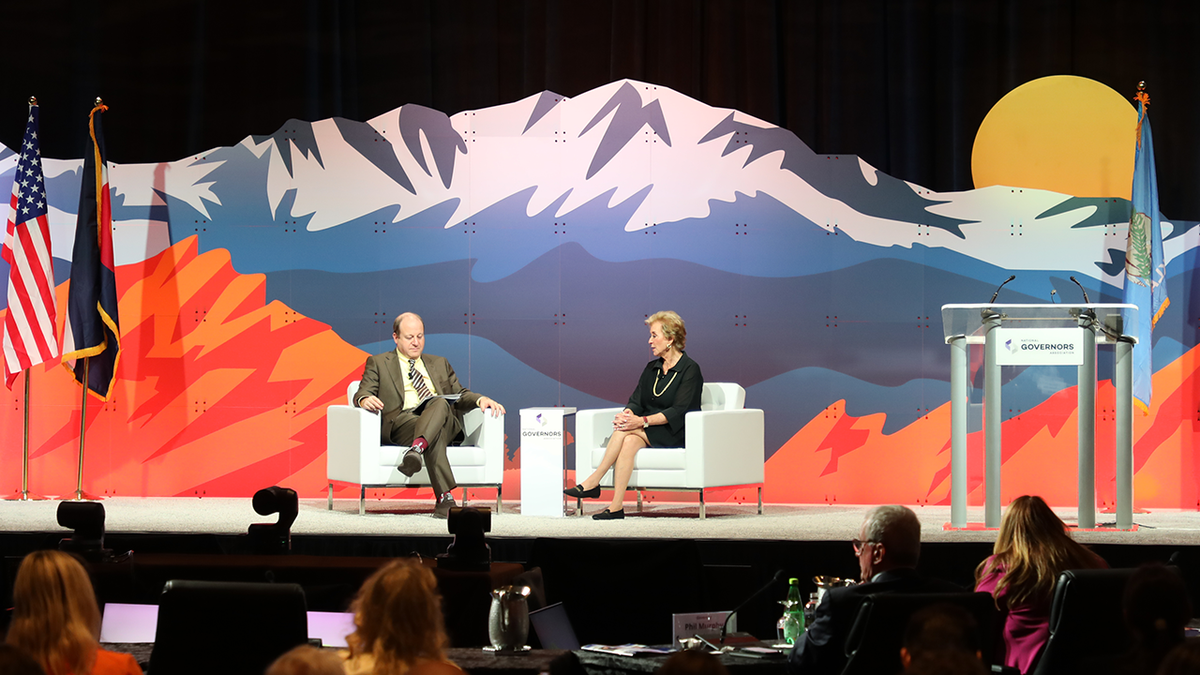
National Governors Association (NGA) outgoing chair Gov. Jared Polis discusses American education with Education Secretary Linda McMahon at the NGA Summer meeting in Colorado Springs, Colo., on Friday, July 25, 2025. (Deirdre Heavey – Fox News Digital)
Ahead of the summer meeting, Eric Wohlschlegel, NGA communications director, emphasized the bipartisan nature of the NGA and told Fox News Digital the NGA’s «mission hasn’t changed.»
According to The Atlantic report, Democratic members of the NGA complained the group «did not respond forcefully enough» when the Trump administration paused federal funding early this year, as Gov. Janet Mills of Maine clashed with Trump over biological men playing in women’s sports and, more recently, when Trump authorized the National Guard to California to amid the anti-ICE protests.
«Every public statement NGA issues reflects bipartisan consensus. So far this year, all but one statement has had that consensus, and when governors don’t agree, we simply don’t issue one. That’s how we preserve our role as a bipartisan convener, a principle we won’t compromise,» Wohlschlegel explained.
Thirteen Republican and seven Democratic leaders planned to attend the summer meeting, featuring discussions with Education Secretary Linda McMahon and Health and Human Services Secretary Robert F. Kennedy Jr.
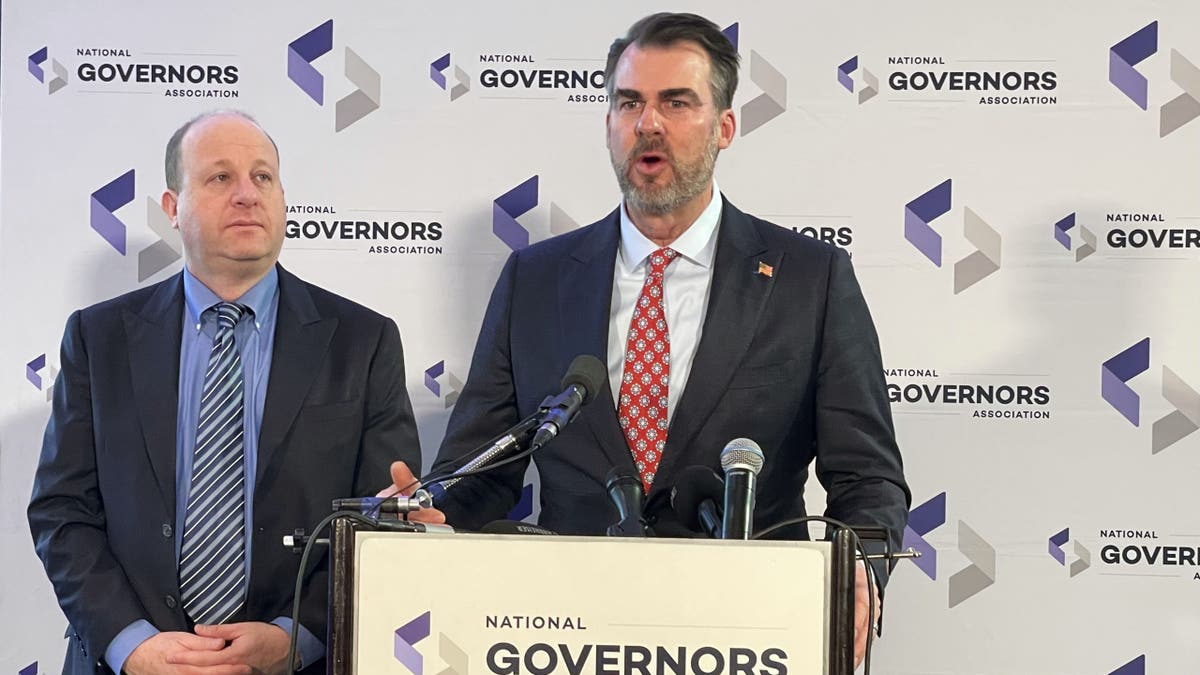
Oklahoma Gov. Kevin Stitt, vice chair of the NGA, speaks as chair Gov. Jared Polis of Colorado listens at the National Governors Association (NGA) winter meeting in Washington, D.C. (Fox News/Charlie Creitz)
A source familiar with the situation blamed the controversy on «Democratic infighting, unspoken campaign jockeying and a few anonymous voices looking to reshape a nonpartisan institution into a political one.»
The source added that «no governors are on the record expressing discontent with the NGA. No allegations of misconduct, governance failure or mismanagement have been raised.»
And without addressing the controversy directly, Conor Cahill, a spokesperson for Polis, told Fox News Digital the governor «has been honored» to lead the NGA and to «work across the aisle with governors on education, permitting reform, standing up to federal efforts to strip away gubernatorial authority around the National Guard and elevating the priorities of states.»
He added that «during this polarizing time, bipartisan organizations are needed more than ever, and NGA must continue to demonstrate value to all governors and effectively communicate governors’ opinions on various matters with the public and the federal government.»
CLICK HERE TO GET THE FOX NEWS APP
Abegail Cave, a spokesperson for Stitt, told Fox News Digital ahead of the NGA that «people seem to forget NGA is a bipartisan organization, not a political one.»
Fox News Digital reached out to Walz and Kelly for comment but did not immediately receive a response.
INTERNACIONAL
Una muestra en Barcelona revela la infancia de Claude y Paloma Picasso junto a sus padres artistas

“No es fácil ser hija de Pablo Picasso, pero tampoco de François Gilot“, ha confesado Paloma Picasso en la presentación de la exposición Crecer entre dos artistas, con el que el Museo Picasso de Barcelona rinde homenaje a su hermano Claude.
Calificada por el director del museo y cocomisario, Emmanuel Guigon, como “sensible, emocionante y poética”, la exposición se podrá ver desde mañana viernes hasta el próximo 26 de octubre, y el público podrá seguir un viaje emotivo por la infancia de Claude y Paloma Picasso junto a sus padres, en Vallauris, en el sur de Francia, adonde se trasladaron tras la Segunda Guerra Mundial.
Impulsada por la propia Paloma Picasso, la muestra reúne cerca de un centenar de obras icónicas, y muchas de ellas inéditas como La Guenon et son petit, entre pinturas, cerámicas, juguetes y fotografías familiares, así como correspondencia, que ofrecen “una mirada íntima y excepcional a la vida familiar del artista”, remarca Guigon.

Las obras de la exposición, que ha contado con el apoyo de toda la familia Picasso, transmiten, según Guigon, “la felicidad de la vida familiar, y al mismo tiempo una vida centrada en el trabajo”, porque, como ha precisado Paloma, sus padres eran “por encima de artistas, dos trabajadores”.
Comienza la exposición con los retratos de los cuatro integrantes de la familia, convertidos en sombras chinas, pero que “también se podría interpretar como las figuras de las cerámicas griegas”, anota el director del museo barcelonés.
En una segunda sala hay retratos de la familia, algunos inéditos como un retrato de Françoise Gilot de 1946 (Mujer joven sentada), cuadros en los que se ve a los niños jugando, muchos recortes de papel convertidos en pequeños objetos para jugar, fuera un mosquetero, un autobús o un “arlequín dislocado”.
En este mismo espacio se encuentra la escultura La mona y su cría (1951) y los dibujos preparatorios, que muestran el proceso seguido por Picasso para convertir en una mona unos cochecitos que le había regalado Daniel-Henry Kahnweiler a Claude y que el artista ‘robó’ a su hijo.

“Esta escultura es la demostración de que Picasso, más que un genio, es humano, porque decir que es un genio es como si su creatividad le hubiera caído del cielo, y detrás de cada obra había mucho trabajo, como se ve en los dibujos en los que esos coches de Claude se convirtieron en una mona», ha señalado Guigon.
En el ecuador del recorrido, se pueden contemplar, por primera vez en España, algunas de las obras de Gilot, centradas en Claude y Paloma y la vida familiar en Vallauris, en la casa de La Galloise.
Se trata de una obra muy influenciada por Picasso, como se puede comprobar en óleos como Claude y Paloma jugando con una pelota (1953), Mis hijos jugando (1952), Claude a caballo sobre un juguete (1952), La lección de lectura o La mesa del jardín con Claude, éstas sin fecha.

Al final de la exposición, se exhiben algunas cerámicas picassianas con Claude como protagonista, una filmación en la que se puede ver al artista transformar un vaso en una paloma, así como la película que el propio Claude dirigió con Thierry Spitzer un año después de la muerte del malagueño, Atelier 74, que documenta el estado del taller de La Californie, prácticamente intacto desde que Picasso lo abandonó en 1961 para instalarse en Mougins.
Paloma Picasso ha destacado que “en aquel ambiente familiar no había diferencia entre las obras importantes y los juguetes que hacía Picasso“, como unas muñecas que creó con la cara de su hija, que “apenas las hizo -ha recordado- me las quitó, así es la vida”.
No ha ocultado también su satisfacción de que se pueda ver en Barcelona la obra de su madre, algo que frustró la pandemia.
Sobre la relación con dos padres artistas, Paloma Picasso ha comentado: “Mi padre vivía y compartía cosas con nosotros, ponía su vida como ejemplo, y mi madre, con un pensamiento más intelectual, expresaba su temor de que acabáramos odiando el arte, porque era el arte el que nos robaba tiempo con nuestros padres; pero vivir en un ambiente tan creativo es lo mejor para un niño”.
Ha asegurado que no tiene muchos recuerdos de sus padres juntos, pues cuando se separaron ella tenía cuatro años, pero “lo hicieron bien, porque ninguno de los dos hablaba mal del otro”.
De ambos heredó la idea de “no conformarse con lo que sabes hacer, sino ir más allá” y fue así como se acabó dedicando al diseño de joyas.
Fuente: EFE
bestof,celebrities,fashion,topics,topix,toppics,toppix
INTERNACIONAL
FTC firings take spotlight in Trump’s fight to erase independence of agencies

NEWYou can now listen to Fox News articles!
The Supreme Court has temporarily allowed President Donald Trump to fire numerous Democrat-appointed members of independent agencies, but one case still moving through the legal system carries the greatest implications yet for a president’s authority to do that.
In Slaughter v. Trump, a Biden-appointed member of the Federal Trade Commission has vowed to fight what she calls her «illegal firing,» setting up a possible scenario in which the case lands before the Supreme Court.
The case would pose the most direct question yet to the justices about where they stand on Humphrey’s Executor v. United States, the nearly century-old decision regarding a president’s power over independent regulatory agencies.
John Shu, a constitutional law expert who served in both Bush administrations, told Fox News Digital he thinks the high court is likely to side with the president if and when the case arrives there.
SUPREME COURT SAYS TRUMP CAN PROCEED WITH FIRING DEMOCRAT-APPOINTED CPSC MEMBERS
The Supreme Court is photographed, Feb. 28, 2024, in Washington. (AP Photo/Jacquelyn Martin, File)
«I think it’s unlikely that Humphrey’s Executor survives the Supreme Court, at least in its current form,» Shu said, adding he anticipates the landmark decision will be overturned or «severely narrowed.»
What is Humphrey’s Executor?
Humphrey’s Executor centered on President Franklin D. Roosevelt’s decision to fire an FTC commissioner with whom he disagreed politically. The case marked the first instance of the Supreme Court limiting a president’s removal power by ruling that Roosevelt overstepped his authority. The court found that presidents could not dismiss FTC commissioners without a reason, such as malfeasance, before their seven-year terms ended, as outlined by Congress in the FTC Act.
However, the FTC’s functions, which largely center on combating anticompetitive business practices, have expanded in the 90 years since Humphrey’s Executor.
«The Federal Trade Commission of 1935 is a lot different than the Federal Trade Commission today,» Shu said.
He noted that today’s FTC can open investigations, issue subpoenas, bring lawsuits, impose financial penalties and more. The FTC now has executive, quasi-legislative and quasi-judicial functions, Shu said.
SCOTUS greenlights other firings
If the Supreme Court’s decision to temporarily allow two labor board members’ firings is any indication, the high court stands ready to make the FTC less independent and more accountable to Trump.
In a 6-3 order, the Supreme Court cited the «considerable executive power» that the National Labor Relations Board and Merit Systems Protection Board have, saying a president «may remove without cause executive officers who exercise that power on his behalf.»
TRUMP’S CONTROVERSIAL PLAN TO FIRE FEDERAL WORKERS FINDS FAVOR WITH SUPREME COURT

U.S. Supreme Court Chief Justice John Roberts attends inauguration ceremonies in the Rotunda of the U.S. Capitol on Jan. 20, 2025, in Washington, D.C. (Chip Somodevilla/Pool via REUTERS)
The order did not mention Humphrey’s Executor, but that and other moves indicate the Supreme Court has been chipping away at the 90-year-old ruling and is open to reversing it.
The case of Rebecca Slaughter and Alvaro Bedoya gets closest to the heart of Humphrey’s Executor.
Where does Slaughter’s case stand?
Slaughter enjoyed a short-lived victory when a federal judge in Washington, D.C., found that Trump violated the Constitution and ruled in her favor on July 17.
She was able to return to the FTC for a few days, but the Trump administration appealed the decision and, on July 21, the appellate court paused the lower court judge’s ruling.
Judge Loren AliKhan had said in her summary judgment that Slaughter’s case was almost identical to William Humphrey’s.
SUPREME COURT UPHOLDS TRUMP’S REMOVAL OF BIDEN APPOINTEES FROM FEDERAL BOARDS
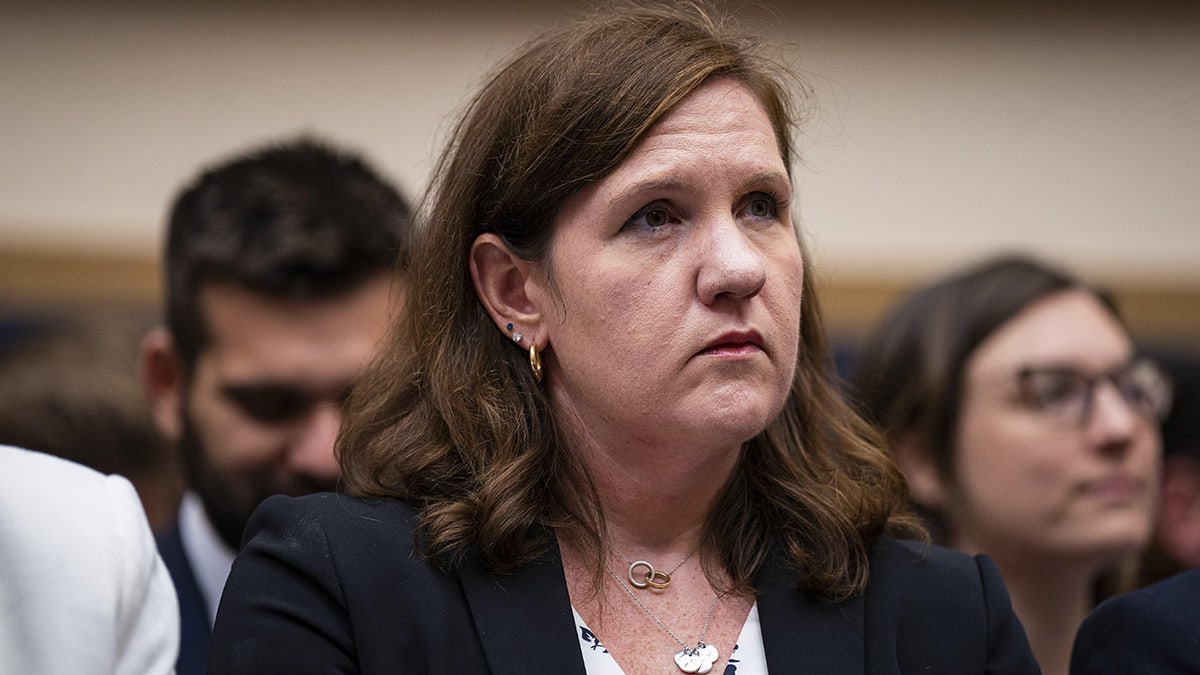
Rebecca Slaughter, commissioner of the Federal Trade Commission (FTC), during a House Judiciary Committee hearing in Washington, DC, US, on Thursday, July 13, 2023. (Al Drago/Bloomberg via Getty Images)
«It is not the role of this court to decide the correctness, prudence, or wisdom of the Supreme Court’s decisions—even one from ninety years ago,» AliKhan, a Biden appointee, wrote. «Whatever the Humphrey’s Executor Court may have thought at the time of that decision, this court will not second-guess it now.»
The lawsuit arose from Trump firing Slaughter and Bedoya, the two Democratic-appointed members of the five-member commission. They alleged that Trump defied Humphrey’s Executor by firing them in March without cause in a letter that «nearly word-for-word» mirrored the one Roosevelt sent a century ago.
Bedoya has since resigned, but Slaughter is not backing down from a legal fight in which Trump appears to have the upper hand.
CLICK HERE TO GET THE FOX NEWS APP
«Like dozens of other federal agencies, the Federal Trade Commission has been protected from presidential politics for nearly a century,» Slaughter said in a statement after she was re-fired. «I’ll continue to fight my illegal firing and see this case through, because part of why Congress created independent agencies is to ensure transparency and accountability.»
Now a three-judge panel comprising two Obama appointees and one Trump appointee is considering a longer-term pause and asked for court filings to be submitted by July 29, meaning the judges could issue their decision soon thereafter.

 POLITICA3 días ago
POLITICA3 días agoMáximo Kirchner declaró una fortuna de 8.300 millones de pesos: representa un 76% más que el año anterior

 POLITICA2 días ago
POLITICA2 días agoLa justicia de Santa Cruz desafío a la Corte Suprema e incluyó a Cristina Kirchner en el padrón electoral

 POLITICA3 días ago
POLITICA3 días agoQué dijo Javier Milei en la Derecha Fest: las frases más impactantes






















